Insta360 X5 vs DJI Osmo Action 360: Which Camera is Better for Motorcycle Riders?
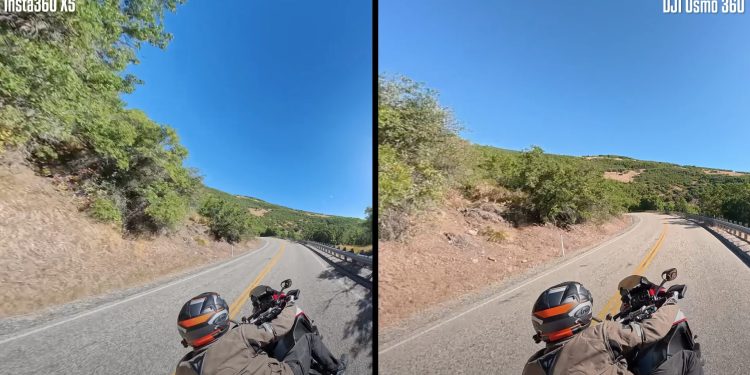
When it comes to capturing the thrill of motorcycle riding, few tools are more exciting than 360 cameras. They let you relive a ride from every angle, create dynamic edits, and share the experience in ways that standard action cams just can’t touch. Recently, I had the chance to put two of the latest contenders to the test: the Insta360 X5 and the DJI Osmo Action 360. Both claim to deliver cutting-edge performance, but only one feels truly built for riders.
I should point out right away that I’m sponsored by Insta360. But when they asked me to compare their X5 with DJI’s new Osmo, they specifically asked me to be honest. They even got on a video call to stress that they want real feedback because that’s how products improve. So this isn’t a marketing pitch, it’s a rider-to-rider look at which camera really works best for motorcycles.
Real-World Testing: Track and Street
Specs are fun to read, but cameras need to be tested in the real world. So I took both to the racetrack (arguably the harshest environment for a motorcycle camera) and also for a street canyon ride. Both were set to my preferred settings: 8K, 24fps in H.264. Why H.264 instead of H.265? Because the files are larger and less compressed, which makes them easier to work with in editing.
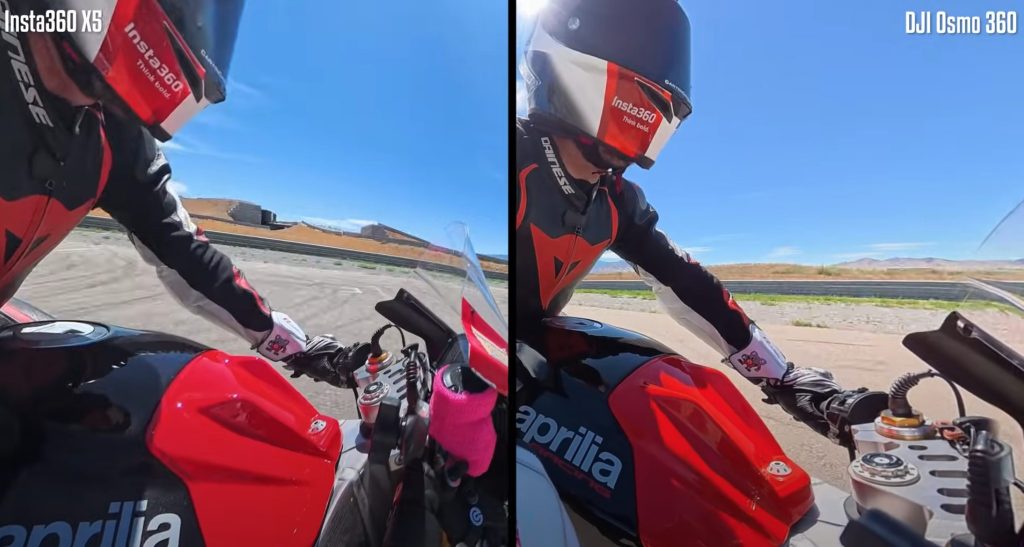
At first glance, both cameras produce sharp, colorful footage. But YouTube compression strips away a lot of the bleeding-edge quality anyway, so once your video is online, the subtle differences in 10-bit vs. 8-bit color don’t matter nearly as much as you’d expect.
The Reality of Motorcycle Footage
One thing to understand is that motorcycle footage always looks a little “rough.” Leaves, road texture, and constant vibration are all difficult for digital cameras to process because of motion compression algorithms. So even the best action cameras will struggle a bit in this environment.
That said, some design choices make a big difference in how usable the footage is.
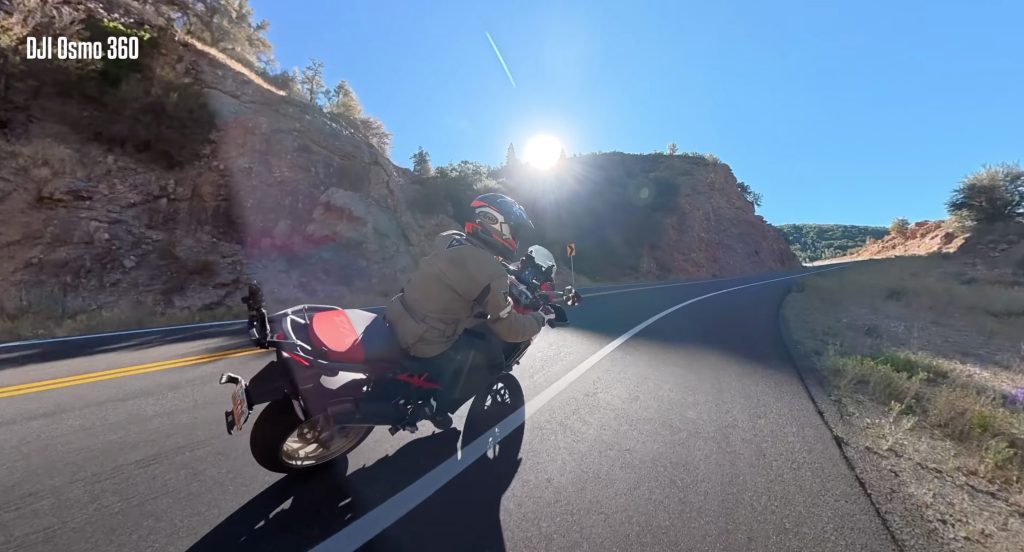
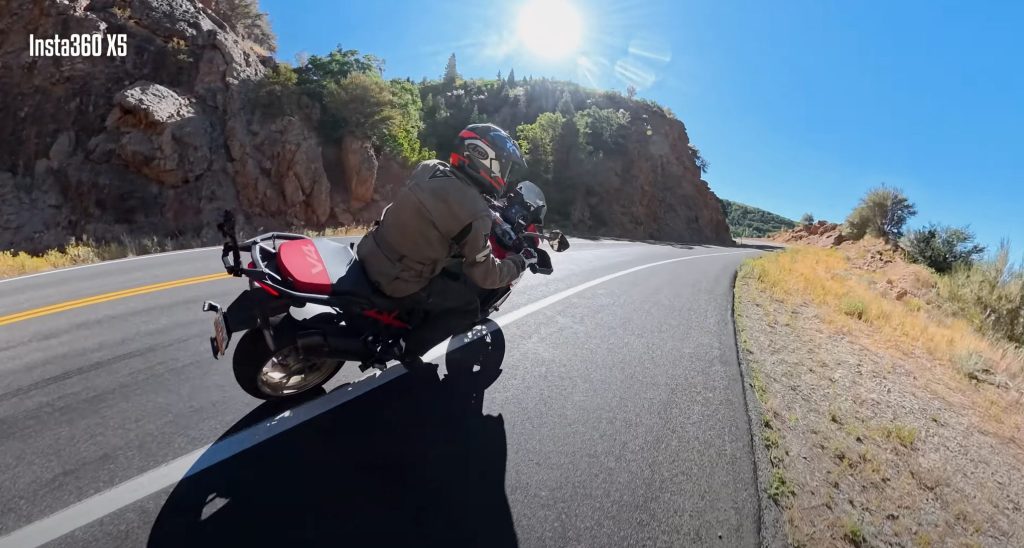
Form Factor and Mounting
The Insta360 X5 is long and narrow, while the DJI Osmo is short and squat. On the bike, that difference can matter. The narrower Insta360 body can be slightly easier to manage on an invisible stick. And for track riders, where mounts are often limited to just three inches, the extra length of the X5 lets you get the lens out just a little further, which is helpful when you want a clean shot of yourself on the bike.
Lens Durability
Here’s a big one: the lenses. On the Insta360 X5, the lenses are replaceable. Scratch one, and you can swap it out in minutes. On the DJI Osmo, the lenses are fixed. If you damage one, the entire camera has to be sent back for repair.
Menus and Workflow
If you’ve used Insta360 cameras before, DJI’s menus will look oddly familiar because they’re nearly identical. While imitation may be the sincerest form of flattery, it can also feel a bit shameless. On the plus side, it does make switching between cameras easier. But I found the copying a little off-putting.
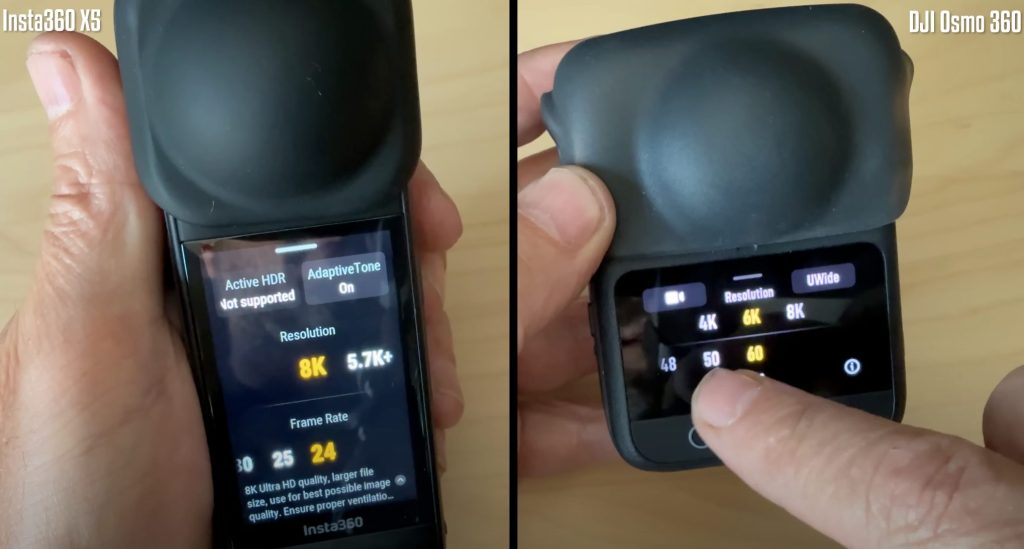
Workflow is another big consideration. The Insta360 Studio software is polished, stable, and fast. DJI offers a similar Adobe Premiere Pro reframe plugin, but in practice it does not work well. During encodes, video file sizes will change unexpectedly, and worse, the audio track can vanish or randomly merge with other audio tracks. For riders who need consistency and reliability, that’s a serious drawback.
Sound Quality
Now let’s talk sound. Because for motorcycle videos, sound is everything. You want viewers to hear your bike, not just a wall of wind noise.
Both cameras can pair with a Bluetooth headset, but Insta360 also has their new Mic Mini, which makes capturing voice comms and commentary much easier. But even leaving voice aside, the difference in riding sounds is night and day. The Insta360’s integrated wind reduction is excellent, cutting down on buffeting and letting you actually hear the engine.
The DJI Osmo? Its mic isn’t terrible, but it is awful. Wind noise dominates, and engine character is all but lost. For riders who want professional, high-quality videos, this is a dealbreaker. Natural engine sound is what gives riding footage life, and without it, videos feel flat and amateur.
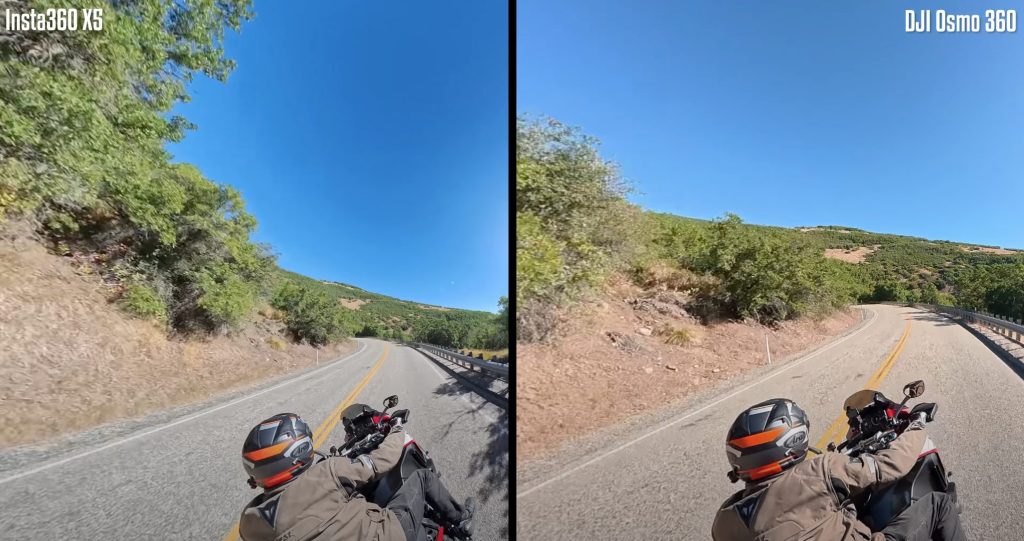
Pros and Cons
Insta360 X5
Pros:
- Replaceable lenses
- Narrow form factor, easier for track mounting
- Superior sound with excellent wind reduction
- Huge accessory ecosystem (including Mic Mini)
- Stable and reliable workflow software
Cons:
- 8 Bit Color (10-Bit from DJI)
- No Internal Storage
- Slightly Heavier
- Smaller Sensor
DJI Osmo Action 360
Pros:
- Solid first attempt at a 360 camera
- 10-Bit Color
- Larger Sensor
- Compact body
Cons:
- Fixed lenses that require full repair if damaged
- Sound quality is poor for motorcycles
- Reframe plugin for Adobe is buggy, changes file sizes, and loses audio
- Accessory ecosystem is limited
- Feels like a copy of Insta360 rather than its own innovation
Final Thoughts
I really wanted to give the DJI Osmo Action 360 every possible consideration. It’s an impressive first attempt, and it shows promise. But apples to apples, and especially dollar to dollar, the Insta360 X5 is still the better camera for motorcycle riders. The only reason to choose the DJI is if you’re already deeply invested in the DJI ecosystem. Otherwise, Insta360 simply offers the better experience, from mounting to workflow to sound.
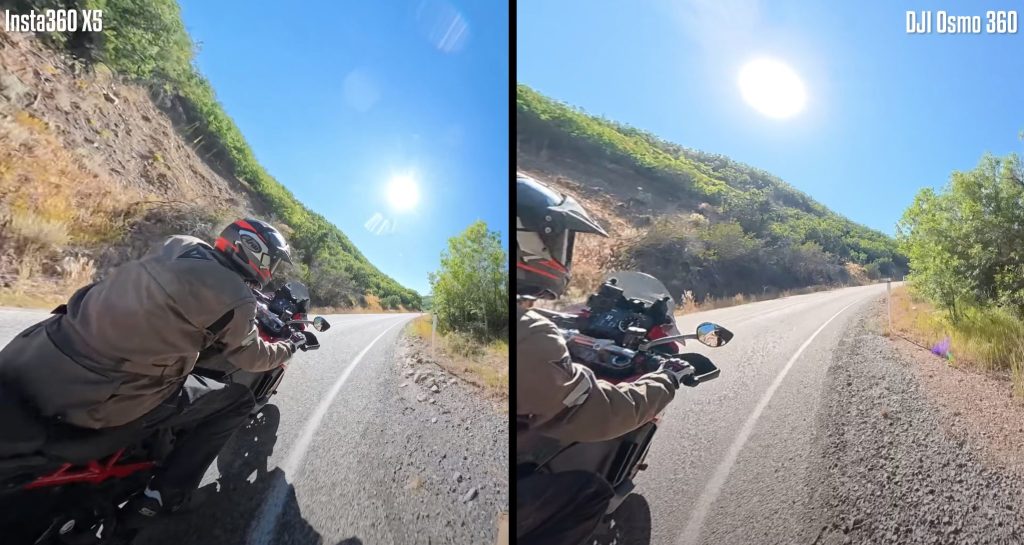
For riders who care about professional-quality footage, natural engine sounds, and a stress-free editing process, the choice is clear: Insta360 X5 wins this round.
Learn More:
Insta360 X5: https://tinyurl.com/yc2u82mx
DJI Osmo 360: https://www.dji.com/360






